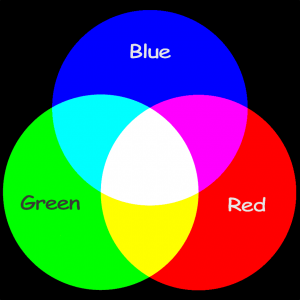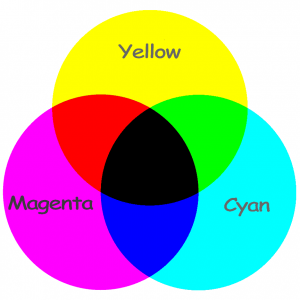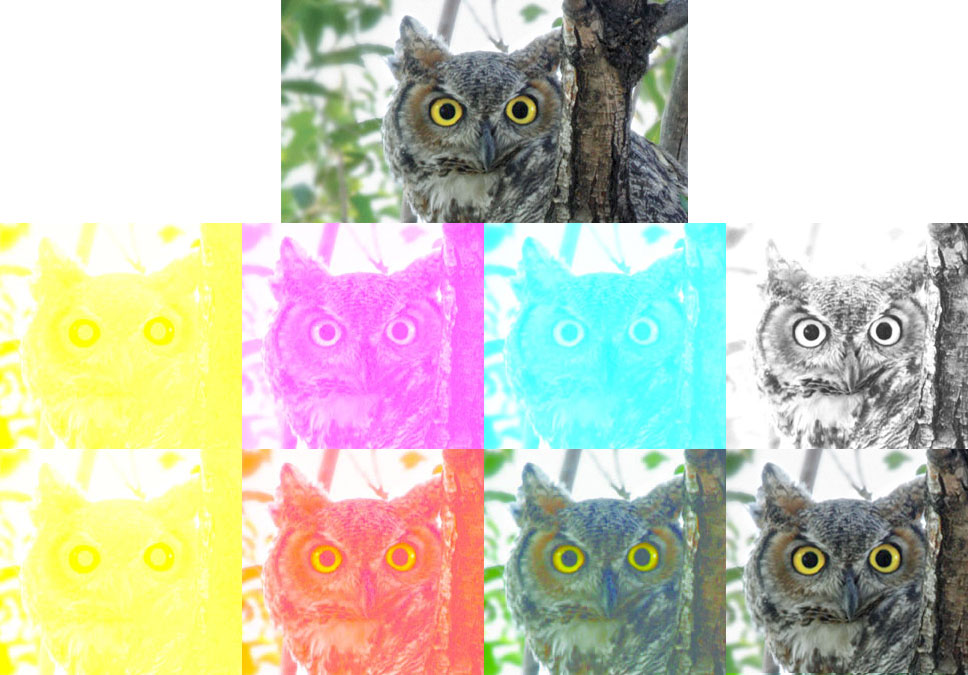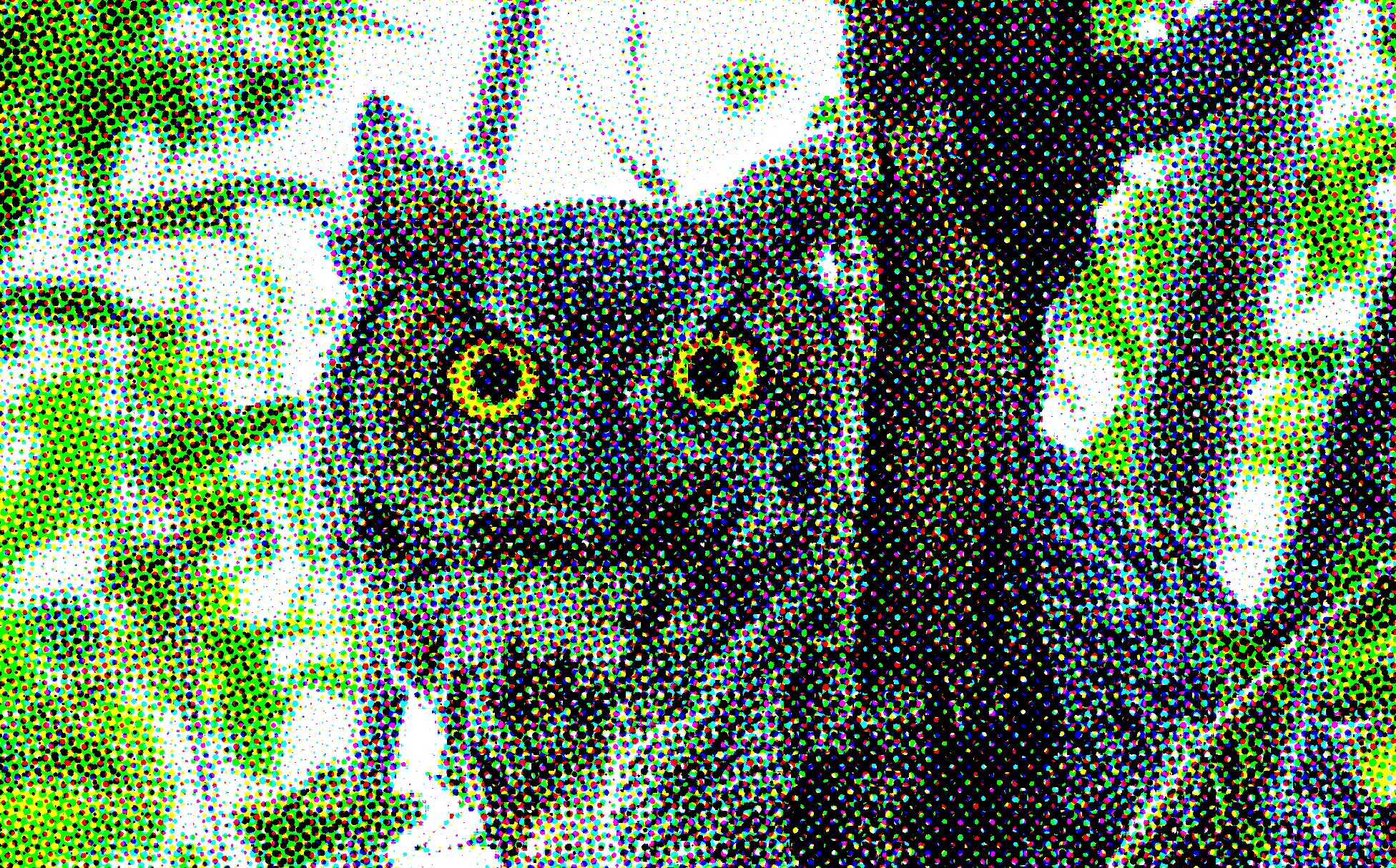In order to better understand the four color printing process we must first discuss the color theory that makes it possible. Color theory is broken down into two distinct areas, additive and subtractive. Both are vital to portraying color photographs in different ways, Our Main area of interest is in additive color theory since this is the vehicle that brings us to four color offset printing. When printing “process” color we begin with a white substrate and add color ink in order to give the illusion of a photograph or any color on that substrate. The primary colors in the subtractive color pallet are Cyan, Magenta and Yellow, Black is added called “K” so as to not confuse it with Blue. The addition of black ink is necessary so less of the other 3 colors can be used on the press and to give the image a cleaner crisper black and add more detail to the shadow areas.
The color wheel on the left represents the relationship between the additive colors, demonstrating how the primary colors interact to form the additive primary colors, and where all 3 colors intersect black is formed. This shows the important relationship between the two pallets and the wavelengths of the light that they represent since the printing plate for each primary color is filtered through its opposite color to isolate the needed color, for instance a blue filter completely blocks yellow light, a red filter blocks cyan and green stops the magenta light wavelength.
 The additive color pallet starts with black as a base, or to be more precise, no light at all. The colors are projected or, as with an LCD Monitor, colored diodes are turned on in varying intensities to create the full spectrum of colors. With equal intensities of all three colors the result is neutral or white depending on the perception of the viewer.
The additive color pallet starts with black as a base, or to be more precise, no light at all. The colors are projected or, as with an LCD Monitor, colored diodes are turned on in varying intensities to create the full spectrum of colors. With equal intensities of all three colors the result is neutral or white depending on the perception of the viewer.
The following graphic is an example of the four color process, with which it is possible to reproduce all the colors of the rainbow using only 3 ink colors and Black.
Since a printing press can only print inks in an all or none fashion (either 100% ink or no ink at all) it is necessary to convert the colors into halftones prior to printing. Here is an example of the owl printed then enlarged to show the halftone dots that create the illusion of a photograph. The rosette pattern of the dots is intentionally created by carefully angling the screens at 45, 75, 15 and 0 degrees to eliminate more annoying moiré patterns that will occur if the screens are improperly angled. Other screen angles are also used as per the press operator or graphic artists discretion.
At Mountain States Lithographing we have the best presses, pressmen and graphic arts personal to achieve the quality you need and expect for your full color printing needs.
~ Kendall Bassett Apr 25, 2015




